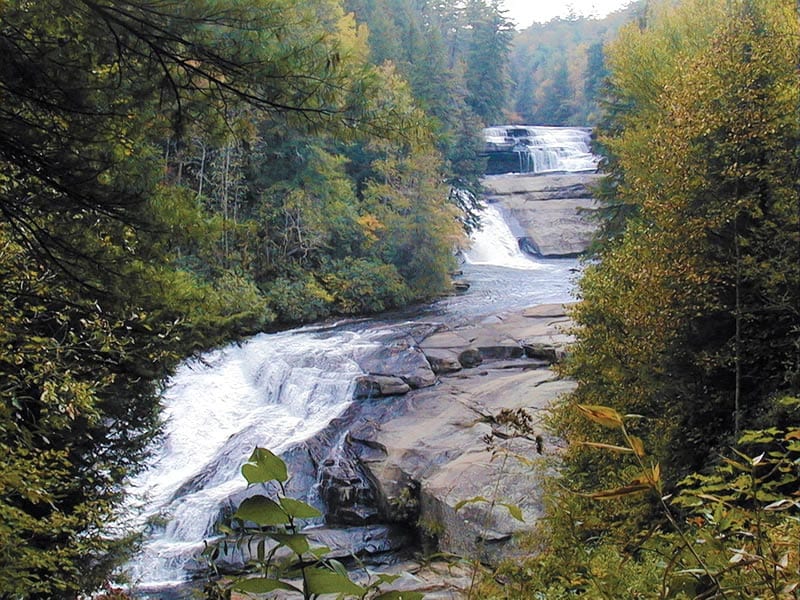The Little River, near Brevard and Hendersonville, N.C., achieves the original purpose of delayed harvest trout waters back when they started popping up all over the Southeast in the 1990s. It provides a cool-weather trout fishery where there otherwise wouldn’t be one.
It was one of the later additions to the DH program. The 2,200-acre tract the Little River flows through was purchased by the state in 2000, bringing the total acreage of DuPont State Forest up to more 10,400 acres. This state-managed recreational area southeast is heavily visited. Several lakes and the gorgeous Little River waterfalls bring a lot of non-fishing traffic to the park. Just like most DH waters, the river also receives heavy fishing pressure. There are a lot of trout stocked by bucket brigade into a stretch of about a mile and a half between Dense Lake and Hooker Falls. For beginners and those who enjoy catching a lot of fish, it is a good option.
It’s also a good option because the Little River offers spectacular scenery. Upper Falls, Triple Falls and Hooker Falls draw scads of waterfall watchers and photographers on busy weekends. The plunge pools at their bases are also a good place to practice deep nymphing techniques. The runs just upstream of the falls are off-limits, though. Fishing within 300 feet of the tops of the waterfalls is prohibited.
The standard assortment of DH flies should suffice. Egg patterns, flashy streamers and nymphs, and worm patterns are always popular with freshly stocked trout. The catch-and-release season runs October into June. After this the river opens to harvest under regular hatchery-supported regulations.
Some of the other creeks spread over the Dupont property have water conditions conducive to wild trout year-round. These are mostly small streams with tight conditions and little fish. For the adventurous angler who enjoys exploring small flows, they are an option when the DH gets too crowded.
The North Carolina Wildlife Resources Commission sampled all of the waters of the state forest in 2000 to develop a management plan for the fisheries. Almost 50 percent of the streams on the property hold populations of wild rainbows, browns, brook trout or some combination of the three. There aren’t many who know there are nearly 18 miles of trout water on the park. Pretty little wild rainbows up to 9 inches inhabit most of these creeks.
If you find yourself at DuPont and have caught enough fish on the delayed harvest, it might be worthwhile to take a look at Grassy Creek and Jim Branch. There are also several other little streams worth exploring, and some of them contain native brook trout.
By Nick Carter
For GPS coordinates to access points and detailed maps of all the region’s best trout water, check out “Flyfishers Guide to North Carolina & Georgia.” It is available on Amazon or by emailing the author at nsc8957@gmail.com.
